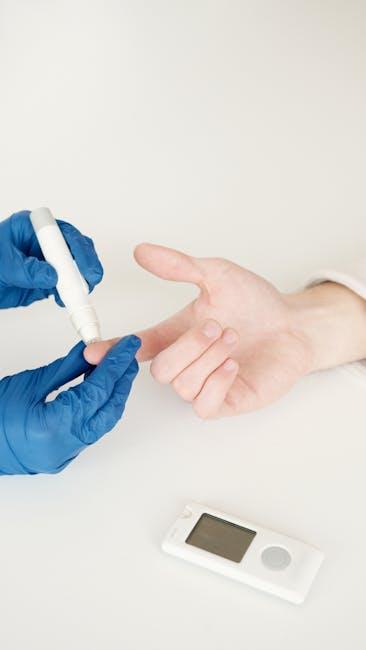
Diabetes Type 2 is a condition that affects millions of adults worldwide, and its prevalence continues to rise. It is a chronic condition characterized by high blood sugar levels due to the body’s inability to properly use insulin or produce enough of it. While the exact cause of Type 2 diabetes is not fully understood, factors such as genetics, lifestyle choices, and obesity are known to increase the risk of developing the condition.
Recognizing the warning signs and symptoms of Diabetes Type 2 is crucial for early diagnosis and treatment. Early detection can help prevent complications such as heart disease, stroke, kidney failure, and nerve damage. In this article, we will explore the common warning signs and symptoms of Diabetes Type 2 in adults.
1. Increased thirst and frequent urination:
One of the most common symptoms of Diabetes Type 2 is increased thirst and frequent urination. When blood sugar levels are high, the kidneys work overtime to filter and absorb excess glucose. This leads to increased urination, which can cause dehydration and increased thirst. If you find yourself drinking more water than usual and needing to urinate frequently, it could be a sign of Diabetes Type 2.
2. Unexplained weight loss:
Unexplained weight loss can be a symptom of Diabetes Type 2, especially when coupled with increased thirst and frequent urination. When the body is unable to use glucose for energy, it starts breaking down fat and muscle for fuel instead. This can lead to rapid weight loss, even if you are eating a normal amount of food. If you are experiencing unexplained weight loss, it is important to consult a healthcare provider for further evaluation.
3. Fatigue and weakness:
People with Diabetes Type 2 often experience fatigue and weakness due to high blood sugar levels affecting the body’s ability to convert glucose into energy. This can lead to feelings of tiredness, weakness, and fatigue, even after getting enough rest. If you are feeling unusually tired and weak, especially after meals, it could be a warning sign of Diabetes Type 2.
4. Blurred vision:
High blood sugar levels can cause changes in the shape of the lens inside the eye, leading to blurred vision. Blurred vision can occur suddenly and may come and go throughout the day. If you are experiencing blurred vision, it is important to consult an eye specialist and a healthcare provider to rule out Diabetes Type 2 as a potential cause.
5. Slow wound healing:
People with Diabetes Type 2 may experience slow wound healing due to poor circulation and impaired immune function. High blood sugar levels can damage blood vessels and nerves, leading to reduced blood flow to the extremities and delayed healing of cuts, sores, and infections. If you notice that your wounds are taking longer than usual to heal, it could be a sign of Diabetes Type 2.
6. Numbness or tingling in the hands and feet:
Diabetes Type 2 can cause nerve damage, known as diabetic neuropathy, which may result in numbness, tingling, and pain in the hands and feet. This condition can affect the sensory nerves, motor nerves, and autonomic nerves, leading to symptoms such as loss of sensation, muscle weakness, and digestive issues. If you are experiencing numbness or tingling in your hands and feet, it is essential to seek medical attention to determine the underlying cause.
7. Recurring infections:
High blood sugar levels can weaken the immune system, making people with Diabetes Type 2 more susceptible to infections. Common infections such as urinary tract infections, yeast infections, and skin infections may occur more frequently in individuals with uncontrolled diabetes. If you are experiencing recurring infections, it is important to consult a healthcare provider for proper evaluation and treatment.
8. Darkened skin patches:
Acanthosis nigricans is a skin condition characterized by darkened, thickened patches of skin, usually occurring in areas with folds and creases, such as the neck, armpits, and groin. This skin condition is commonly associated with insulin resistance, a key factor in the development of Diabetes Type 2. If you notice darkened skin patches on your body, particularly in areas with friction or moisture, it could be a sign of underlying insulin resistance and Diabetes Type 2.
9. Increased hunger:
People with Diabetes Type 2 may experience increased hunger due to the body’s inability to properly use glucose for energy. High blood sugar levels can lead to fluctuations in insulin and appetite-regulating hormones, causing feelings of hunger even after eating. If you find yourself feeling hungry shortly after meals or experiencing sudden cravings for sugary or high-carbohydrate foods, it could be a sign of Diabetes Type 2.
10. Sexual dysfunction:
Diabetes Type 2 can affect sexual function in both men and women due to nerve damage and circulation problems. Men may experience erectile dysfunction, while women may experience decreased libido and vaginal dryness. These sexual problems can have a significant impact on relationships and overall quality of life. If you are experiencing sexual dysfunction, it is essential to discuss your symptoms with a healthcare provider to determine the underlying cause and appropriate treatment options.
In conclusion, recognizing the warning signs and symptoms of Diabetes Type 2 in adults is crucial for early diagnosis and treatment. If you are experiencing any of the symptoms mentioned above, it is essential to consult a healthcare provider for proper evaluation and management. By maintaining a healthy lifestyle, monitoring blood sugar levels, and following a personalized treatment plan, people with Diabetes Type 2 can lead a productive and fulfilling life. Remember that early detection and intervention can make a significant difference in managing the condition and preventing complications. Take charge of your health and seek professional help if you suspect you may have Diabetes Type 2.












